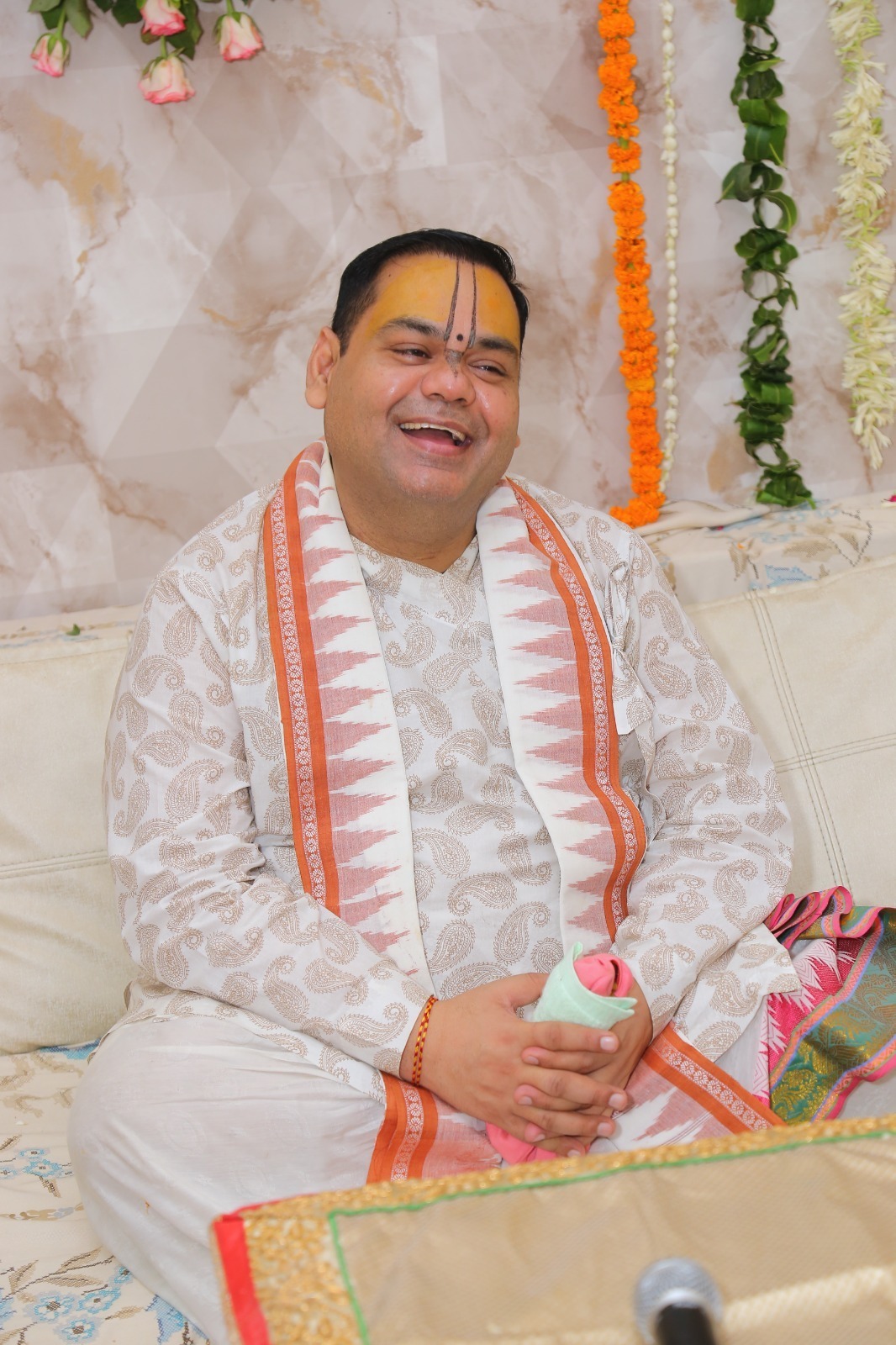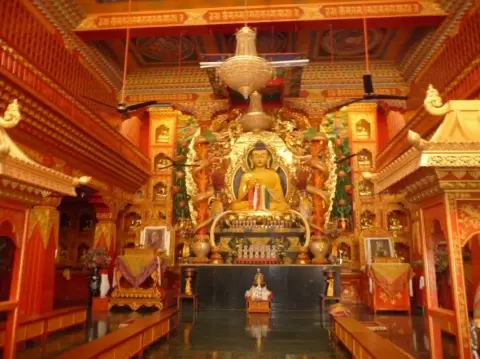In the spiritual heartland of India, nestled in the sacred town of Sarnath—where the Buddha gave his first teachings—stands the Vajra Vidya Institute, a renowned monastic university dedicated to the study and preservation of Tibetan Buddhism. Founded under the spiritual guidance of the 17th Gyalwang Karmapa, Ogyen Trinley Dorje, the institute serves as a vital bridge between ancient Buddhist wisdom and the modern world.
This article explores the institute’s origins, teachings, daily life, cultural significance, global outreach, and its critical role in ensuring the Karma Kagyu tradition thrives well into the 21st century.
Table of Contents
1. The Origins of Vajra Vidya Institute
The Vajra Vidya Institute (VVI) was inaugurated in 1999 by the 17th Gyalwang Karmapa, the spiritual head of the Karma Kagyu lineage of Tibetan Buddhism. The project was born from a desire to create an institute that would:
Train young monks in Buddhist philosophy and dialectics
Continue the monastic scholastic tradition
Promote the values of compassion, wisdom, and non-violence
Built in Sarnath, a place deeply revered by Buddhists across the world, the institute also resonates with the symbolic importance of the first turning of the wheel of Dharma.
2. Location: The Significance of Sarnath
Sarnath is not just a backdrop—it’s a living link to the Buddha’s life. Here, Gautama Buddha delivered his first sermon to his five disciples, known as the Dhammacakkappavattana Sutta, establishing the Four Noble Truths and the Eightfold Path.
This historical relevance makes Sarnath the perfect home for Vajra Vidya Institute, aligning modern-day spiritual education with the foundational teachings of Buddhism.
3. Mission and Vision of Vajra Vidya Institute
The institute’s mission is rooted in three main pillars:
A. Preservation of the Karma Kagyu Lineage
VVI is deeply committed to maintaining the teachings and philosophical traditions of the Karma Kagyu school, one of the four major schools of Tibetan Buddhism.
B. Advanced Scholastic Training
Monks are educated in Buddhist logic, Madhyamaka philosophy, Abhidharma, Vinaya, and Prajnaparamita, using both traditional and contemporary methods.
C. Global Dharma Outreach
VVI serves as a hub for international students, translators, and practitioners who wish to immerse themselves in authentic Tibetan Buddhist studies.
4. Educational Structure and Curriculum
Vajra Vidya Institute offers a systematic 9–12-year program modeled after traditional shedra (monastic universities). It includes:
Preliminary studies (grammar, logic, Tibetan language)
Intermediate curriculum (Middle Way philosophy, Abhidharma, Vinaya)
Advanced courses (Tantric studies, debate, and meditation instruction)
Daily debate sessions that sharpen logic and understanding
Language training in Tibetan, Sanskrit, English, and Hindi
Each monk progresses through stages, culminating in the Acharya degree, equivalent to a Buddhist master’s.
5. The Role of the 17th Gyalwang Karmapa
His Holiness the 17th Gyalwang Karmapa plays an instrumental role in shaping VVI’s direction. Known for his progressive leadership, he emphasizes:
Environmental awareness and sustainable living
Gender equity within spiritual communities
Engaging modern science and ethics with Buddhist philosophy
Digitization of ancient texts
His visits to the institute are often met with large public gatherings, teachings, and special pujas.
6. The Daily Life of a Vajra Vidya Monk
Monastic life at Vajra Vidya is disciplined, rigorous, and deeply spiritual. A typical day includes:
4:30 AM: Morning prayers and meditation
7:00 AM: Breakfast followed by philosophy classes
10:00 AM–12:00 PM: Debate sessions
2:00 PM–5:00 PM: Lectures on canonical texts
6:00 PM: Evening puja or personal study
9:00 PM: Rest
Alongside spiritual training, monks are also encouraged to learn modern education tools such as computers, communication skills, and translation work.
7. Global Impact and International Students
Although rooted in Tibetan traditions, Vajra Vidya Institute welcomes students from around the globe, including:
Monks and lay practitioners from Nepal, Bhutan, the US, Europe, and Southeast Asia
Scholars and translators interested in Buddhist scriptures
Visitors participating in retreats, workshops, and teachings
This international presence ensures that the teachings of the Karma Kagyu lineage transcend cultural boundaries.
8. Contributions to Translation and Text Preservation
VVI collaborates with global organizations like:
84000 Project
Karma Kagyu Translation Committee
TibShelf and Dharma Treasures Archive
These projects aim to digitize and translate Tibetan Buddhist texts, preserving them for future generations and making them accessible to non-Tibetan readers.
9. Vajra Vidya Institute as a Retreat Center
In addition to long-term study, the institute also hosts:
Short retreats for lay practitioners
Special programs for mindfulness and meditation
Seasonal teachings by renowned Rinpoches and scholars
The peaceful ambiance of Sarnath, coupled with the serene architecture and spiritual energy of the monastery, makes it ideal for meditative introspection.
10. Architectural and Cultural Beauty
The institute’s Tibetan monastic architecture, with golden prayer wheels, stupas, and painted mandalas, creates an atmosphere of sacred space. The main shrine hall features:
A large golden Buddha statue
Murals of the 16 Arhats
Traditional thangka paintings and incense offerings
These features not only reflect Tibetan artistic tradition but also create an immersive environment for spiritual learning.
11. Community Engagement and Social Work
Vajra Vidya also contributes to social causes, including:
Free education for underprivileged youth
Medical camps and dental checkups for local communities
Support for environmental conservation efforts in the Sarnath region
Engagement with interfaith harmony dialogues
The institute believes in a living Dharma, one that serves not only the practitioner but the greater society.
12. Visiting Vajra Vidya Institute
Visitors are welcome throughout the year to:
Attend teachings and empowerments
Meditate in the shrine hall
Explore the library and bookshop
Experience Tibetan monastic life
Participate in special Buddhist festivals like Losar (Tibetan New Year)
It’s a destination not just for Buddhists, but for anyone seeking peace, knowledge, and cultural depth.
13. Challenges and the Way Forward
Like many monastic institutions, Vajra Vidya faces challenges such as:
Securing funding for infrastructure and staff
Adapting traditional teachings to digital formats
Engaging younger generations
Navigating visa and travel restrictions for foreign students
However, with continued support from the global Buddhist community, Vajra Vidya remains committed to its vision of enlightenment through education.
14. How to Support Vajra Vidya Institute
Those interested in helping the institute’s mission can:
Donate to support monks’ education
Sponsor translations of Buddhist texts
Volunteer for teaching or administrative roles
Share and promote its teachings online
Visit and participate in programs
Every contribution helps preserve the pristine lineage of the Buddha’s teachings.
Final Thoughts
Vajra Vidya Institute stands as a shining example of harmony between tradition and modernity. In a time where distractions dominate daily life, it offers a sanctuary for reflection, study, and spiritual growth.
From the wise eyes of young monks in robes to the silent echoes of ancient teachings chanted in its halls, Vajra Vidya is not merely a place—it is an ongoing legacy of the Buddha’s timeless message.
FAQs about Vajra Vidya Institute
Q1: Where is Vajra Vidya Institute located?
Vajra Vidya Institute is located in Sarnath, Uttar Pradesh, India, near Varanasi—a sacred site in Buddhism where Lord Buddha gave his first sermon.
Q2: Who founded Vajra Vidya Institute?
The institute was established under the guidance of His Holiness the 17th Gyalwang Karmapa, Ogyen Trinley Dorje, a leading figure in Tibetan Buddhism.
Q3: Can non-monastics study at Vajra Vidya Institute?
Yes. While the institute primarily serves monastic students, it also offers programs, teachings, and retreats open to laypeople and international visitors.
Q4: What lineage of Buddhism does the institute follow?
Vajra Vidya follows the Karma Kagyu lineage of Tibetan Buddhism, known for its deep meditation practices and Mahamudra teachings.
Q5: What kind of curriculum is taught?
The institute teaches classical Buddhist texts on philosophy, logic, ethics, and tantra. It also integrates modern subjects like language training and environmental education.
Q6: How can I support Vajra Vidya Institute?
You can support through donations, volunteering, attending events, or by helping with the translation and digitization of sacred texts.
Q7: Are teachings available online?
Yes. Many of the institute’s teachings and talks by the Karmapa and senior lamas are now available through online portals and streaming platforms.











